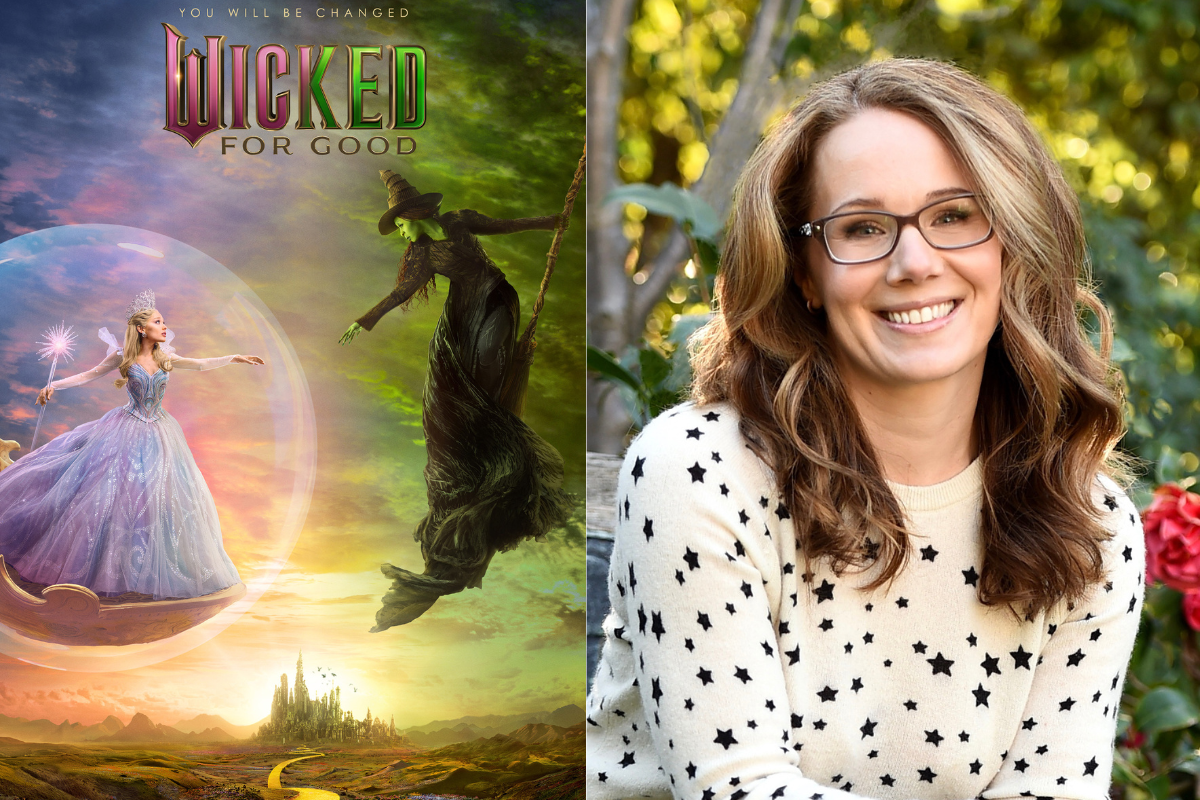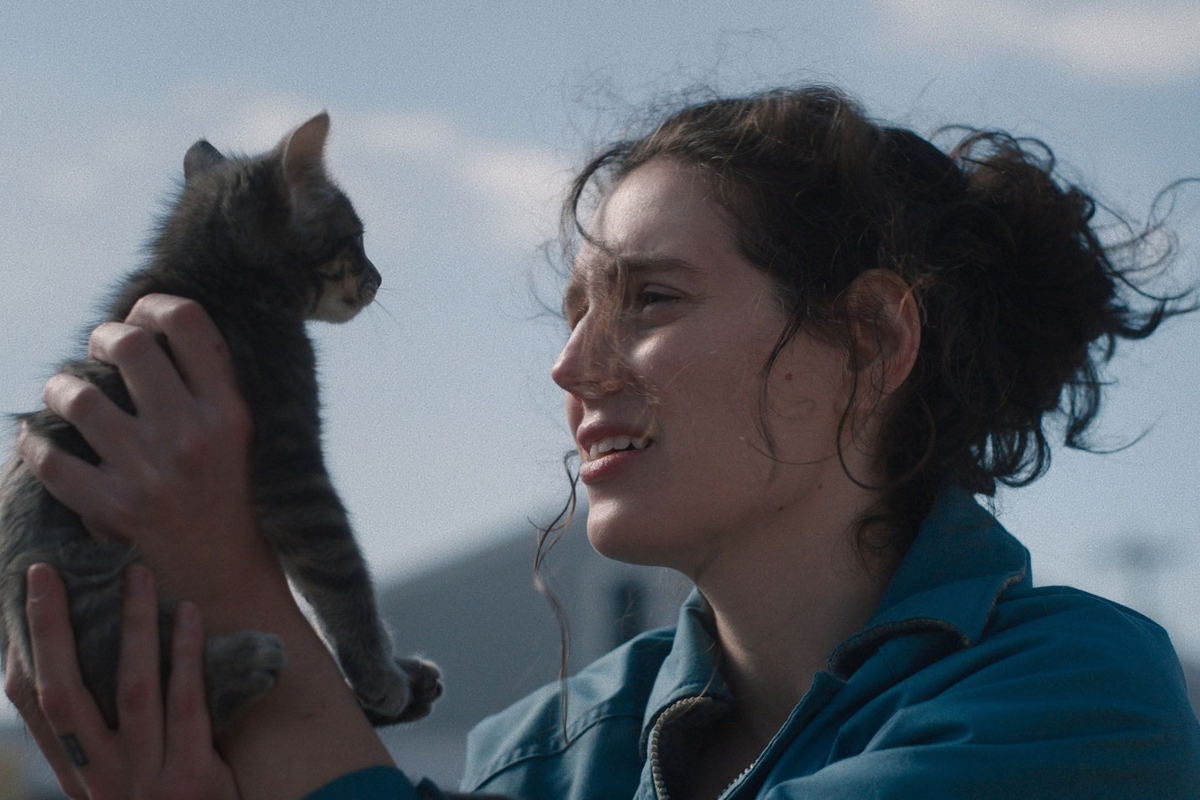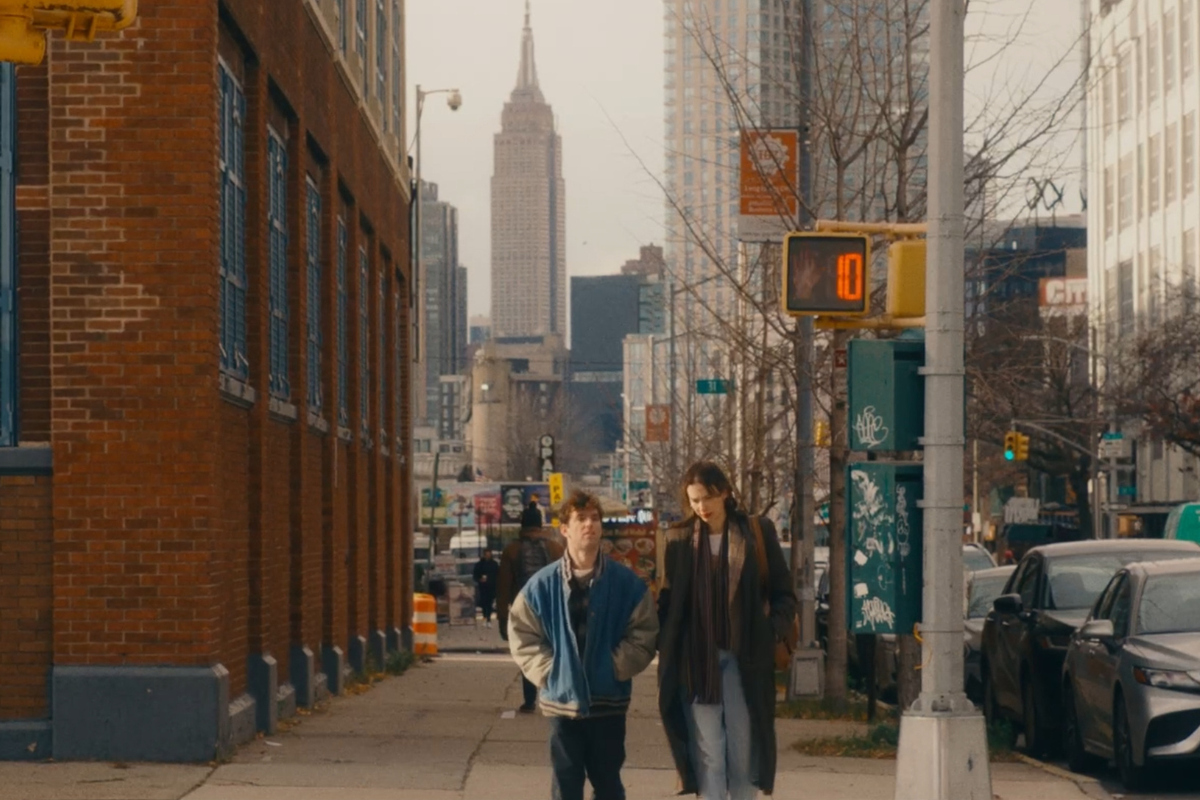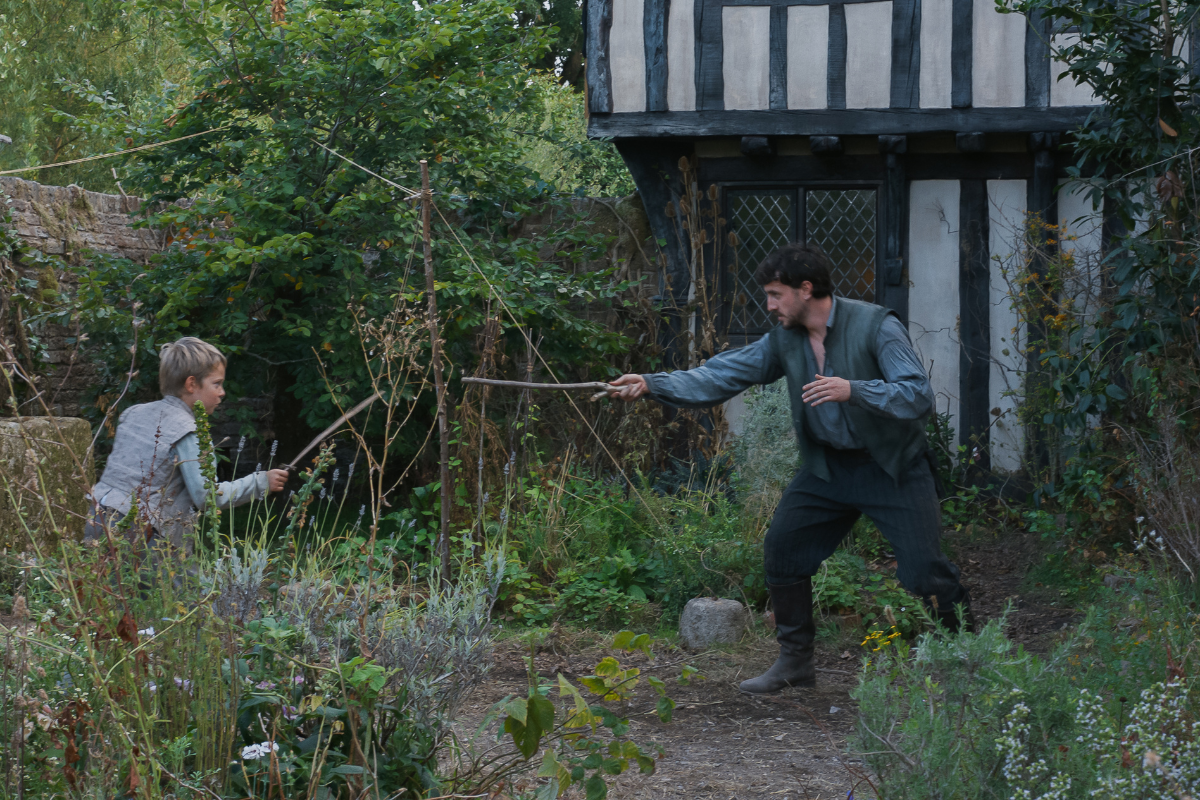Shaping and Dramatizing History with ‘Women of the Movement’ Creator Marissa Jo Cerar
‘Women of the Movement’ creator, writer, and executive producer Marissa Jo Cerar speaks with Script about how this project came to fruition, the amount of preparation from historical research to outlining the series, to talking about her writing journey and why writing is her “jam.”
Women of the Movement tells the story of Mamie Till-Mobley, who in 1955 risks her life to find justice after her son Emmett is brutally murdered in the Jim Crow South. Unwilling to let Emmett’s murder disappear from the headlines, Mamie chooses to bear her pain on the world stage, emerging as an activist for justice and igniting the Civil Rights movement as we know it today.
Where an incredibly important and profound piece of American history was seemingly lost, has now been justly and appropriately brought to the forefront in Marissa Jo Cerar's thoughtfully planned and executed show Women of the Movement. This show taps into the tapestry of the Civil Rights movement, injustice, the quintessential journalistic voices from the NAACP, and most importantly, the story of unsung trailblazer Mamie Till-Mobley.
I had the grand honor of speaking with Women of the Movement creator, writer, and executive producer Marissa Jo Cerar about how this project came to fruition, the amount of preparation from historical research to outlining the series, to talking about her writing journey and why writing is her "jam."
This interview has been edited for content and clarity.
Sadie Dean: How did this project initially come cross your desk?
Marissa Jo Cerar: I was brought on to this project by chance really. I was just taking a general meeting on my hiatus. I was working as a writer-producer on another show and I went into Kapital Entertainment, the studio behind Women of the Movement, and Aaron Kaplan, who's the head of the studio, pitched me a bunch of ideas and then said they had an Emmett Till book and we're going to tell the story on another streaming service or premium cable, I can't remember exactly where it was, but that they would start over. And I just sort of said, ‘I'm not really looking to take on any work right now. But when they said Emmett Till, I just immediately thought of his mother and I just saw her face in my head so clearly and I said, ‘OK if I'm even going to think about doing this before I walk out of this office, the only way I would entertain it would be to tell it from the point of view of his mother.’ Because I feel like so many times these stories, they might fit into that category of true crime, but they're really following the lawyers, the police officers, the investigators, and not the people who are left behind when someone they love is murdered. And as much as we might think so many people know who Emmett Till was, they don't and some people have never even heard her name before. So, I just felt if they wanted to tell it the way that I wanted to tell which is very character-driven female-forward, and humanity-forward, and to actually get to know the people rather than just what happened to them, then I felt like I was the right writer, but if they wanted the true-crime take that wasn't me.
So, I said, ‘OK, let me do the research,’ because I only knew about a paragraph of information, and then it wasn't even entirely accurate. I just heard ‘A boy whistled at a white woman and was killed in the 50s and his mother opened his casket,’ and that was basically all I knew. I didn't know all the details. I didn't know that he had nearly died multiple times before he was killed and how tragic it was to have survived a very dangerous breeched birth, to have survived polio, to only be murdered while you're on vacation, which is gut-wrenching and as a mother, I just wanted to dive in really deep. I spent months reading every single thing I could, watching every piece of film, newsreel footage from the 1950s, documentaries about the subject, and every interview that maybe Mamie Till-Mobley gave; I just studied and studied and studied until I was ready to craft the serious pitch. At the end of the summer, it took me about three months.
Sadie: Wow, three months. That's incredible. What was that process like adapting from multiple sources on top of all of the research and tapping into Mamie Till-Mobley’s journey on the page?
MJ: Really getting to learn who she was and the little things that some people might not care about, like what kind of car she drove at the time, what her apartment looked like, the clothes she wore, she had the most amazing taste. But when I learned how young she was, she was in her early 30s when she took this on, because there’s images of her where she's so poised, she seems so mature, she seems like someone 20 years older, because that's all I have are these images. I had no idea that she was a teenager when she gave birth to Emmett, that she was a single working woman in Chicago at the time and all of that really helped shape the series for me.
And when I learned about what she went through when she gave birth and as a Black woman, not really feeling like she got the health care that she needed and that she wasn't heard when she was giving birth and that's still relevant today and so many Black women are experiencing that. All of those details really had nothing to do with quote-unquote, the case or the murder, or the incident or the kidnapping really, but it helped me; you have to decide where you're going to begin and where you're going to end the story. It’s much bigger than six episodes of network television. It could be multiple years, it could be a twenty-hour series. There's so much there, so I had to make a decision about where I wanted to begin and end and I felt like a most profound and universal way to begin the show was to begin with life rather than death, rather than showing a dead body or crime scene or even the open casket. It was to show this child who came into the world who tremendously overcame so much only to be murdered as a result of racism.
Many points of view were really helpful for me even when I was reading things that were inaccurate, to get the different people it was based on, where they live, how they responded to the case, the way that people wrote about the case in newspapers, how Emmett Till was portrayed as a man when he just turned 14; all of this was really important to me and helped me shape it and make the decision to number one, get to know the boy for his light that was extinguished. And to remind the audience of his age every episode and then to see him in every episode because when you lose someone you see them there with you always and I thought it was really important that he remained with us, we never forgot that it was a human being who was killed. He wasn't a martyr. He wasn't a headline. He was a little boy and so all in all, everything I learned really helped me shape the approach and my take and the structure too.
Sadie: What was that process like working with your writer’s room to find those storylines and anchoring that storyline for Mamie?
MJ: Well, I pitched the entire series - I essentially pitched the Bible when I sold the show, and I pitched eight episodes at the time. I pitched Mamie's arc, it was through the stages of grief which is how I actually structured it. And I wanted every episode to feel different. I wanted the first episode to feel like a coming-of-age family drama. I wanted the second episode to be a kidnapping thriller, I wanted episode three to be all about the funeral and the public versus the private, the open casket versus the people, and the police in the south trying to cover up the crime for the trial. And episode four was actually the investigation, then five and six were really the trial-heavy episodes. I didn't want to just tell every single piece of the story and then it feels like, ‘Oh, and then this happened,’ I wanted to shape everything and have a theme.
I did so much work before my writer’s room was ordered. I wrote the Bible. I wrote the first two scripts. Then a few months passed and three weeks after the world shut down, I think it was April 2020, the writer’s room was ordered to write the remaining four episodes and to break the remaining four episodes - a five-week writers room and I was able to hire a writers assistant and three writers. And it was very challenging, but we did it. We wrote an extraordinarily detailed outline. I wanted to make sure all of those were through by the time the room wrapped so that when you went off to script there wouldn't be any major surprises. We came in ready - like we weren't just sitting around on Zoom shooting the breeze. [laughs] We came in with a Bible, with these books, with documentaries with everything they should have watched, and then we came in - how do we shape it? What are the scenes and what is the theme of each episode? And do we need to create composite characters? Which we did.
I had originally pitched eight episodes, ‘Am I insane now that they only ordered six episodes?’ [laughs] ‘How can you guys help me? What’s too much and what do we need to lose?’ So, they really helped so much. And then when the room was done, two months later, the show was ordered to series and then I was on set by myself because of COVID. It was not a one-woman show by any stretch of the imagination. [laughs] But just like with my new show, I like to start the writer’s room with a ton of work already done. It just makes life easier to be prepared. All that work, it's hard to do on your own, but it makes the time in the room more productive.
Sadie: I don't know how you do it, you're a wizard. That’s incredible. What was the collaboration process like with your directors? Which are some of the greatest storytellers and voices we are so lucky to have in this industry. What was it like working with them, especially in keeping tonal consistency?
MJ: Gina Prince-Bythewood was always going to be the person, there was never anybody else that I would go to shoot the first episode. I worked with her on Shots Fired the show she co-created with Reggie Rock Bythewood, like five years ago and we have remained in touch ever since. The moment I knew the show was going to be ordered, I went to her and asked her to read it and she responded to it, fortunately. And because I had a relationship, we had skipped over the getting to know you stuff and just focus on the work.
Kasi Lemmons directed the finale. I had also worked with her on Shots Fired. She directed one of the episodes that I wrote on that show and I fell in love with her. And of course, Gina and Kasi are two iconic filmmakers, they're just incredible human beings. I love them so much. And I'm so grateful that they were willing to tell the story with me because they like to do their own thing and they like to make movies. So, to do a network television show is a stretch for them and I'm forever grateful. And so grateful for the collaboration.
I had never met Tina Mabry or Julie Dash, but for me to still find directors who are going to tell the stories for the other episodes they had to have film experience. I wanted film experience and television experience because there are different parameters, but I wanted it to feel like a movie, I wanted the camera to move. It was really really, really important to me. The template that Gina and her DP Tami Reiker created and with all of our department heads, was such a big collaboration, with Michelle Harmon, our production designer, and Justine Seymour, our costume designer; we just wanted it to be consistent, even though that episodes are different. And we went from north to south, it still needed to feel like one show - that was really important. And that was part of that as my job was absolutely making sure it remained consistent when our directors left and we would bring someone new on; it was my job to make sure it was one voice, one story, and to just be there for my cast as the consistent voice. It was a massive collaboration that was life-changing for a lot of us.
Sadie: Tell us about your writing journey. What inspired you to become a writer and what was the attraction for you to write for television?
MJ: I've wanted to be a writer since I was 10 years old, maybe even before. I loved reading so much as a child. And I was always attracted to stories of the underdog and the other because I was adopted - I'm one of eight adopted children. I'm a Black girl and I'm biracial. I grew up in cornfield land USA. [laughs] So, I was an outsider and I had a very different worldview and experience because of all of that. And so, I think that's probably why I read so much and watched so much TV and so many movies. And I just always knew - my mom encouraged that. She bought me a typewriter, and I learned how to type like, very, very fast. [laughs] I would illustrate my little novellas that I wrote and that was always my jam. I just loved to escape and storytelling, creating worlds where the underdogs have a voice. And part of that was because I didn't see people like myself reflected in my favorite movies and TV shows - that's changed so much thank God.
[A Path to ‘The Wonder Years’ Universe: An Interview with Creator and Showrunner Saladin K. Patterson]
Then I went to film school with the intention of directing - and I will direct one day when my daughter is a little older. [laughs] It’s definitely on the horizon. I just need a different lifestyle than a writer. I started out writing features and I optioned a few. I was on the Black List, and sold a script, but that was right about the time but TV started changing and it started becoming really character-driven. And movies started changing and it was harder and harder to really get anything made. I was on the Black List and got my agent and I decided to write a pilot about televangelism in the late 1970s - I wasn't even alive but I'm obsessed with televangelism [laughs] I’m obsessed with cults and things like that, just doing the deep dive and the research. If I don't understand something I just want to consume everything I can about it. So, I wrote this pilot called Electric Church. And that coupled with being on the Black List, I immediately got staffed, but that was after struggling for like10 years or something out of college.
It seemed like overnight because I had just written the pilot, but I had been struggling trying to sell features and write features for so long and I realized that TV because it's so character-driven, it's really my jam, that’s what I love. I just like going as deep as I can and really understanding every point of view, every different character. I still love movies, and I'll still continue writing for them whether I get paid or not. [laughs] I like that there's an end, like in a limited series. I love movies and that’s what I love about writing limited because it's just a longer movie.
Sadie: Right, you get to write six movies in one go. I love your backstory too because now I'm connecting the dots to that's why you were writing on The Fosters and The Handmaid's Tale. It all checks out.
MJ: [laughs] Exactly. There's a reason that every show I wrote on. There was no like, ‘Oh, they’re offering you this job.’ I only take jobs where I feel like I have something to offer the show. I would never just take a job for a paycheck, which I'm sure annoys a lot of people on my team. [laughs]
Sadie: I think we’ve pretty much established that you're a writing wizard but I am curious, do you have a writing routine?
MJ: I have a routine. But now that I'm running my second show that's in pre-production, we're going to film in about a month and a half, it's casting and like 5,000 questions and I'm still trying to write the last two episodes of the show. It's very challenging. I have to just do it when I can, which is often in the middle of the night, or very early in the morning. I can't really set aside days anymore because I'm casting the show. Before I was in this position though, like when you're just developing or nothing's ordered, or you're waiting for an order or you're writing to get an order, I just try and write as much as I can all day long. I'm one of those people. I just got to keep going, keep going, keep going until it's done, and then rewrite it 15 times before I let anybody read it. I do outline and note card everything. The series pitch, the show pitch, the episode pitch - I do note cards for every scene all over my walls and I outline extremely detailed like 30-page outlines. And then the scripting is much easier when you do all that work from my point of view when you get working in advance and it just begs fewer questions from the partners at the studio and network when you just put it all on the page and outline.
Sadie: And because you're such a character-driven writer, how much prep work are you doing on character backgrounds and backstory?
MJ: With these last two things were both adaptations, really – so, it's just consuming everything I can about the character and then dramatizing it. For my original stuff, I spend a lot of time just going back to their childhood, whether anybody knows any of it or not. When I’m talking with the writers, when we're trying to understand why a character does what they do, we go back deep - we always go back into their life and try to understand why people are motivated. It's really important. I can't move on to the next scene until I understand why someone acts the way that they do. I like to go as deep as I can. Sometimes something will just pop out of my brain or my mouth and I'll write it down. [laughs] It's not necessarily a routine. I like to just prep as much as possible.
Watch Women of the Movement On Demand and on Hulu.
Learn more about the craft and business of screenwriting from our Script University courses!
Sadie Dean is the Editor of Script Magazine and writes the screenwriting column, Take Two, for Writer’s Digest print magazine. She is also the co-host of the Reckless Creatives podcast. Sadie is a writer and filmmaker based in Los Angeles, and received her Master of Fine Arts in Screenwriting from The American Film Institute. She has been serving the screenwriting community for nearly a decade by providing resources, contests, consulting, events, and education for writers across the globe. Sadie is an accomplished writer herself, in which she has been optioned, written on spec, and has had her work produced. Additionally, she was a 2nd rounder in the Sundance Screenwriting Lab and has been nominated for The Humanitas Prize for a TV spec with her writing partner. Sadie has also served as a Script Supervisor on projects for WB, TBS and AwesomenessTV, as well as many independent productions. She has also produced music videos, short films and a feature documentary. Sadie is also a proud member of Women in Film.
Follow Sadie and her musings on Twitter @SadieKDean







